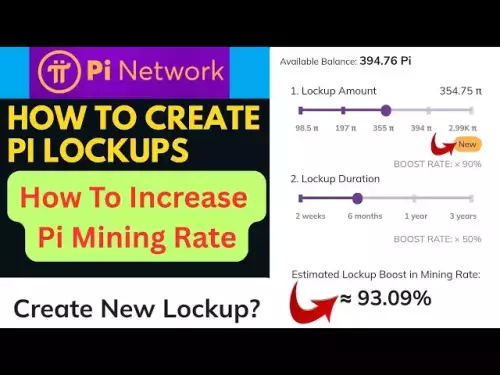-
 bitcoin
bitcoin $114779.865156 USD
2.30% -
 ethereum
ethereum $4226.519789 USD
2.39% -
 tether
tether $1.000545 USD
0.04% -
 xrp
xrp $2.890223 USD
0.92% -
 bnb
bnb $1030.029301 USD
2.95% -
 solana
solana $212.824944 USD
1.69% -
 usd-coin
usd-coin $0.999757 USD
0.01% -
 dogecoin
dogecoin $0.234961 USD
-0.27% -
 tron
tron $0.337174 USD
0.42% -
 cardano
cardano $0.804783 USD
0.09% -
 hyperliquid
hyperliquid $45.748770 USD
-2.85% -
 chainlink
chainlink $21.699170 USD
0.82% -
 ethena-usde
ethena-usde $1.001452 USD
0.08% -
 avalanche
avalanche $30.237800 USD
1.14% -
 stellar
stellar $0.372604 USD
1.52%
Consequences of a Bitcoin contract liquidation
The psychological consequences of Bitcoin liquidation can be severe, including emotional distress, loss of confidence, avoidance behavior, and social stigma.
Nov 17, 2024 at 05:08 am

Liquidation is a forced closure of a leveraged trading position when the trader's margin balance falls below a certain threshold. This mechanism is designed to protect exchanges from losses and ensure market stability. However, it can have severe consequences for traders, especially in the volatile world of Bitcoin.
Consequences of LiquidationThe consequences of a Bitcoin contract liquidation can be significant, both financially and psychologically. Traders who experience liquidation may face:
1. Financial Losses- Loss of Margin: The first and most obvious consequence of liquidation is the loss of the margin deposited by the trader. Margin is the collateral used to open a leveraged position, and when it falls below the required maintenance level, the position is closed forcibly. Depending on the size of the position and the timing of the liquidation, these losses can be substantial.
- Negative Balances: In some cases, liquidation may result in a negative account balance. This occurs when the losses incurred on the closed position exceed the margin deposited. Traders with negative balances may be required to deposit additional funds to cover their deficit or face further action from the exchange.
- Opportunity Costs: Liquidation can also lead to opportunity costs. If a trader's position is closed prematurely, they may miss out on potential profits had the position been held to maturity. In a rising market, these opportunity costs can be significant.
- Emotional Distress: Liquidation can be a stressful and emotionally distressing experience, especially for novice traders. The sudden loss of capital can lead to feelings of disappointment, shame, and frustration.
- Loss of Confidence: Liquidation can erode a trader's confidence in their abilities. Traders who experience multiple liquidations may begin to doubt their trading strategies or question their fitness for trading altogether.
- Avoidance Behavior: After a liquidation, some traders may develop avoidance behavior toward trading. They may become reluctant to open new positions or may scale back their trading activities significantly. This can lead to a missed trading opportunities and reduced profitability.
- Social Stigma: In the close-knit world of cryptocurrency trading, liquidation can carry a social stigma. Traders who experience frequent liquidations may be labeled as "weak hands" or "bad traders." This can damage their reputation and make it more difficult to network and learn from others.
- Difficulty Rebuilding: Once liquidated, traders may find it difficult to rebuild their capital and recover their losses. This is because the volatility of Bitcoin can make it challenging to trade effectively, especially with limited funds.
- Margin Calls: In some cases, exchanges may issue margin calls to traders whose margin balance is nearing the maintenance level. Margin calls require traders to deposit additional funds to cover the potential losses on their positions. If the trader fails to meet the margin call, the position will be liquidated.
- Regulatory Scrutiny: Liquidation can also attract regulatory scrutiny, especially if the exchange involved is suspected of manipulating the market or engaging in fraudulent activities. In such cases, traders who have been liquidated may be able to recover their losses through legal action.
There are several steps that traders can take to mitigate the consequences of Bitcoin contract liquidation:
- Use Realistic Leverage: One of the most effective ways to reduce the risk of liquidation is to use realistic leverage. Leverage allows traders to increase their potential profits, but it also amplifies their potential losses. Traders should only use leverage that they are comfortable with and that aligns with their risk tolerance.
- Manage Risk Effectively: Proper risk management is crucial for traders of all levels. This includes setting stop-loss orders, using trailing stop orders, and limiting the size of their positions relative to their account balance.
- Stay Informed: Traders should stay informed about market news and events that could potentially affect the price of Bitcoin. This includes monitoring economic data, political developments, and regulatory changes.
- Trade with Discipline: Trading with discipline is essential for long-term success. Traders should develop a clear trading plan and stick to it, avoiding emotional or impulsive trading decisions.
- Seek Support: Traders who experience multiple liquidations or are struggling to manage their emotions should seek support from experienced mentors, peers, or mental health professionals.
Disclaimer:info@kdj.com
The information provided is not trading advice. kdj.com does not assume any responsibility for any investments made based on the information provided in this article. Cryptocurrencies are highly volatile and it is highly recommended that you invest with caution after thorough research!
If you believe that the content used on this website infringes your copyright, please contact us immediately (info@kdj.com) and we will delete it promptly.
- Bitcoin, Ethereum, and Correction Concerns: Navigating the Crypto Seas
- 2025-09-30 08:25:12
- Meme Coins, Accumulation, and Smart Money: What's the Deal?
- 2025-09-30 09:25:12
- Swift, Consensys, and Blockchain Settlement: A New Era for Global Finance?
- 2025-09-30 09:10:01
- Crypto Price Surges: Is Grass the Best New Crypto to Buy?
- 2025-09-30 09:10:01
- Cloud Mining, Crypto Investments, and Future Trends: Navigating the Landscape in 2025
- 2025-09-30 09:10:01
- ATH Crypto's $344M DePIN Treasury: Aethir's Bold Plan and Market Impact
- 2025-09-30 08:45:14
Related knowledge
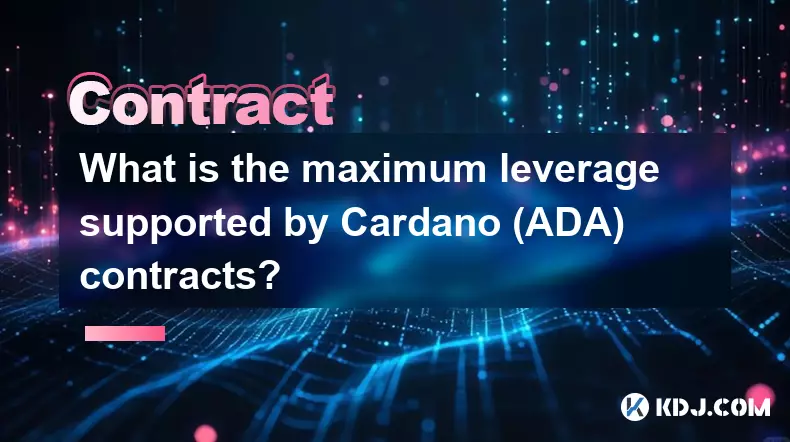
What is the maximum leverage supported by Cardano (ADA) contracts?
Sep 30,2025 at 03:37am
Understanding Leverage in ADA Derivatives Trading1. Leverage in cryptocurrency futures and perpetual contracts allows traders to control larger positi...
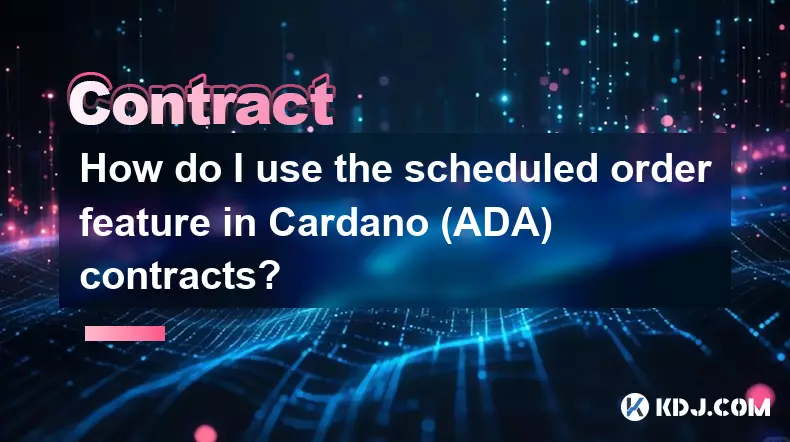
How do I use the scheduled order feature in Cardano (ADA) contracts?
Sep 28,2025 at 10:18pm
Understanding Scheduled Orders in Cardano Smart ContractsCardano operates on a proof-of-stakes consensus mechanism and uses the Plutus scripting langu...

Can I modify the leverage of Cardano (ADA) contracts after opening a position?
Sep 30,2025 at 08:19am
Understanding Leverage in Cardano (ADA) Futures Trading1. Leverage allows traders to control larger positions using a smaller amount of capital. In th...
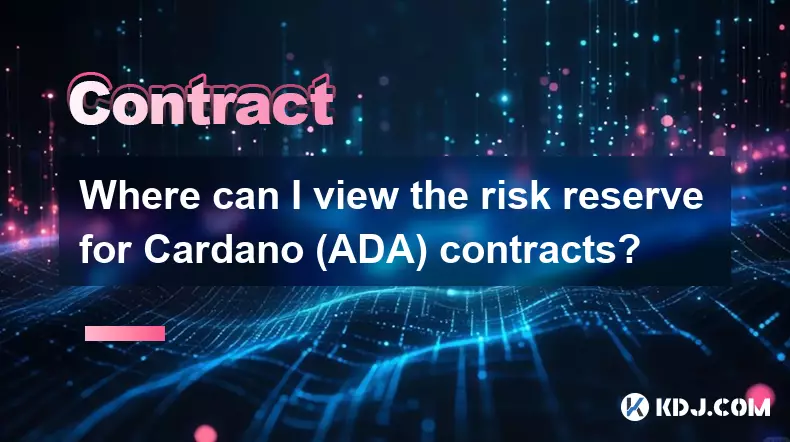
Where can I view the risk reserve for Cardano (ADA) contracts?
Sep 29,2025 at 09:19pm
Risk Reserve Overview in Cardano (ADA) Ecosystem1. The concept of a risk reserve within the Cardano blockchain does not align with traditional central...

How do I enable the "scalping-only" mode for Cardano (ADA) contracts?
Sep 24,2025 at 03:19am
Understanding Scalping Strategies in Crypto Derivatives1. Scalping in cryptocurrency trading refers to executing multiple short-term trades within min...
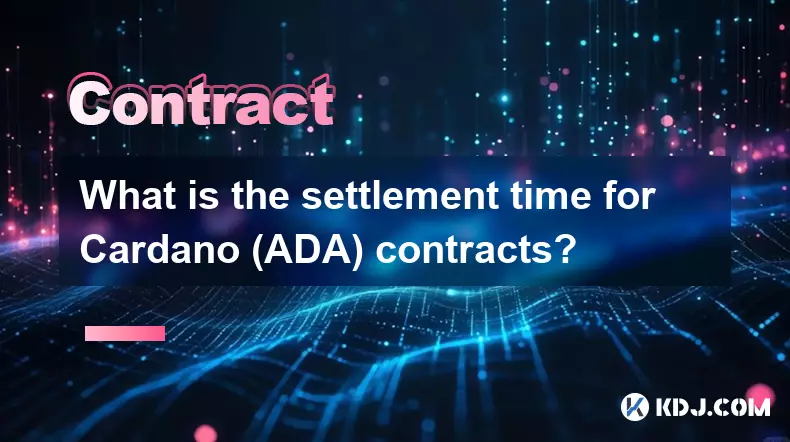
What is the settlement time for Cardano (ADA) contracts?
Sep 28,2025 at 04:18am
Understanding Cardano's Contract Settlement Mechanism1. Cardano operates on a proof-of-stake consensus model known as Ouroboros, which fundamentally i...

What is the maximum leverage supported by Cardano (ADA) contracts?
Sep 30,2025 at 03:37am
Understanding Leverage in ADA Derivatives Trading1. Leverage in cryptocurrency futures and perpetual contracts allows traders to control larger positi...

How do I use the scheduled order feature in Cardano (ADA) contracts?
Sep 28,2025 at 10:18pm
Understanding Scheduled Orders in Cardano Smart ContractsCardano operates on a proof-of-stakes consensus mechanism and uses the Plutus scripting langu...

Can I modify the leverage of Cardano (ADA) contracts after opening a position?
Sep 30,2025 at 08:19am
Understanding Leverage in Cardano (ADA) Futures Trading1. Leverage allows traders to control larger positions using a smaller amount of capital. In th...

Where can I view the risk reserve for Cardano (ADA) contracts?
Sep 29,2025 at 09:19pm
Risk Reserve Overview in Cardano (ADA) Ecosystem1. The concept of a risk reserve within the Cardano blockchain does not align with traditional central...

How do I enable the "scalping-only" mode for Cardano (ADA) contracts?
Sep 24,2025 at 03:19am
Understanding Scalping Strategies in Crypto Derivatives1. Scalping in cryptocurrency trading refers to executing multiple short-term trades within min...

What is the settlement time for Cardano (ADA) contracts?
Sep 28,2025 at 04:18am
Understanding Cardano's Contract Settlement Mechanism1. Cardano operates on a proof-of-stake consensus model known as Ouroboros, which fundamentally i...
See all articles





















